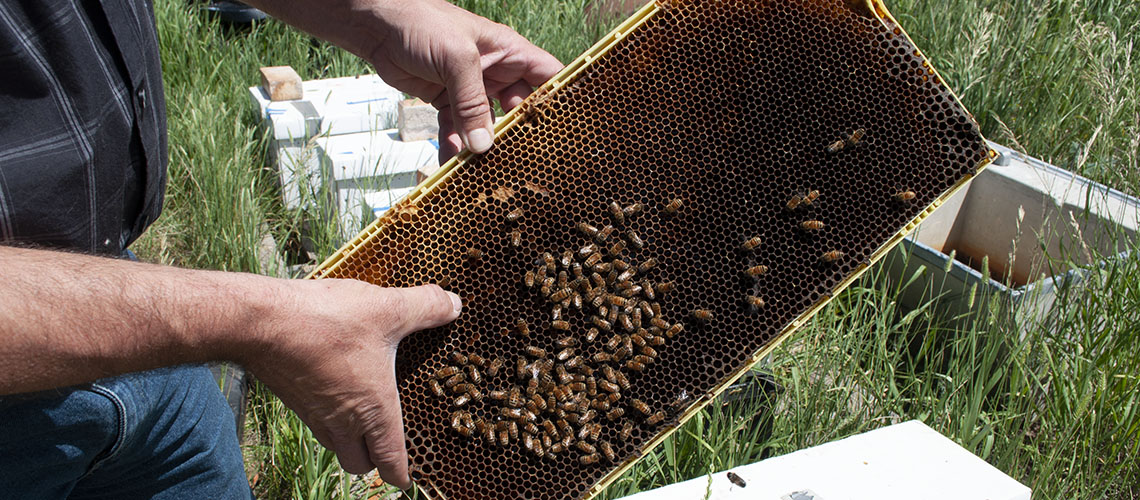
If the only honey you’ve ever spread on your toast or squeezed into your tea has come from a big-box store, you are in for a real treat once you try honey produced by honeybees and gathered by beekeepers right in your own neighborhood.
It tastes better, may reduce plant allergies and provides a boost to the local economy.
With booths common at farmers markets, and professional or backyard beekeepers in all corners of Wyoming, local honey isn’t hard to find, but you might have to be quick. Beekeepers report high demand for local honey. In fact, they say the demand is far greater than the supply.
Especially now.
Worldwide, the beekeeping and honey industry is in a period of significant change, and Wyoming beekeepers feel it, too.
Beekeepers everywhere are being forced to innovate, take risks and try new strategies to keep their businesses thriving. The issue of colony collapse has been in the news a lot lately – the somewhat mysterious disappearance and death of honeybees. In addition to inadequate access to flowers for nutrition, the invasive varroa mites, new diseases, increased pesticide poisoning and stress bees may experience due to being relocated for pollination services contribute to the problem, as well. It all adds up to almost an entirely different industry than previous generations of beekeepers experienced.
For example, when Worland’s Bryant Honey was founded in 1915, five generations ago, the beekeepers experienced about a 3 to 5 percent loss of bees each winter, said Don Bryant, the company’s current owner. Now, they experience anywhere from 25 to 65 percent loss every year. Last year alone, Bryant lost about 2,000 of his 8,000 hives.
“It’s definitely way different than it used to be,” he said.
Wyoming Honey
While honey may not be an enormous moneymaker for the state, it is a multimillion industry here, said Catherine Wissner, a horticulturist with the University of Wyoming’s Laramie County extension and the organizer of the annual Wyoming Bee College Conference.
It’s part of the state’s third-largest industry – agriculture – and supported by state-branded programs like Grown in Wyoming and Made in Wyoming.
There are about 2,000 apiary locations – either single hives or groups of hives – registered in Wyoming. Each hive can produce about 50 pounds of honey per year and earn a beekeeper around $92.50 per year.
Honeybee pollination adds enormous value to agriculture in the state as well, but it’s much harder to accurately quantify, Wissner said.
Managed honeybee colonies contribute at least $15 billion to the value of U.S. agriculture annually thanks to increased yields and better-quality harvests, according to the United States Department of Agriculture.
Industry Innovations
Despite the challenges they face, “honeybees aren’t endangered,” Wissner said. “Beekeepers are.”
The increased challenge of keeping bees alive, alongside relatively unenforced antidumping laws – international efforts to prevent foreign, unregulated honey from flooding the market and artificially driving prices down – are pushing professional beekeepers out of the industry, Wissner explained.
Bryant operates his approximately 8,000 hives in seven Wyoming counties, making his one of the largest honey operations in the state.
“It’s a challenge,” he said. “But I still love it. It’s still a passion.”
His sons, the fifth generation, are now starting to take over the business.
Bryant attributes the extremely high loss rates he’s experiencing to several factors, including the improved efficiency of farming equipment that no longer leaves corners or ditches of crop fields free for wildflowers, increased weed spraying along highways and other areas, and more pesticide spraying during the daytime.
He acknowledges no one is intentionally making life hard for bees and beekeepers, though. In Wyoming, many crops don’t flower and therefore don’t need bees for pollination, leaving farmers relatively unaffected and unaware of the plight of bees.
“We’re all just trying to make a living,” he said. “But better awareness and teamwork could benefit everyone.”
For example, cities often spray weed killer on dandelions and sweet clover along large swaths of highways, eliminating prime nutrition sources for honeybees. And, as invasive Russian Olive trees have been eradicated in recent years, the bees have lost a huge source of early-summer nutrition, as well.
Bryant stops short of suggesting weeds shouldn’t be managed at all, but says perhaps there’s a satisfying compromise to be found.
One method Bryant uses to help keep his bees thriving is packing them up and transporting them to almond fields in California that bloom in late February to early March each year, which keeps the bees fed as well as brings new wealth into Wyoming from out of state.
The almond industry has been a “saving grace” for beekeepers, Bryant said, but the transportation puts additional stress on the bees and his company.
“If it wasn’t for the almond industry helping, most beekeepers would be hobbyists, I think,” Bryant said.
In another hail-Mary play for survival, Bryant is considering following the lead of beekeepers around the nation and building climate-controlled winter storage facilities for his bees.
“It’s really costly,” Bryant said, “But we’ve got to come up with another idea for not having 30 percent losses every year.”
Honey as a hobby
Still, there is good news for fans of local honey: all the attention on bees lately has increased the popularity of beekeeping as a hobby.
At his home just outside the city limits of Cheyenne, Paul Anderson plays host to a few of his 30 beehives. He sells the honey mostly via word of mouth and on Facebook as Anderson Bee Company, and works for Laramie County School District #1 by day. He also runs Prairie Wind Bee Supply, selling bee colonies to new beekeepers and removing honeybee swarms on properties around town.
Different cities have different regulations, he said. In Cheyenne, anyone can have beehives on their property. Beekeepers are required to register their hives, but there is no cost for five or fewer hives, each housing as many as 40,000-60,000 bees. If that seems like a lot of bees in someone’s back yard, Anderson said they disperse over a several-mile radius; the beekeeper and his neighbors would likely barely notice the roaming bees.
In fact, the city can be the best place for bees, he added. The countryside in Wyoming is mainly mile after mile of prairie grass. In the city, bees have an easier time finding flowers thanks to gardens and, yes, weeds – dandelions, clover, sunflowers, etc. While a weedy yard may invite dirty looks from some, it may also invite a complementary jar of honey as thanks from a neighboring beekeeper, Anderson chuckled.
But hobbyists do have to be careful and stay educated, he added. There’s more to it than simply setting up a box and letting the bees do their thing. More bees means more disease, and the varroa mite poses a significant risk in more concentrated populations.
If beekeepers aren’t careful, “you could have a mite machine next door,” Anderson said. The deadly mites can spread from bee to bee and hive to hive, and your hobby may be dead before it really gets started.
Keeping bees alive has been the biggest challenge Rex Johnson, the manager of Taylor Johnson, LLC, or TJ Honey, in Wheatland, has faced as well. He says he started as a hobbyist beekeeper about three years ago, and started marketing and selling his honey at farmers markets and online shortly after getting started.
“We don’t have a problem selling it,” he said. “We just need inventory.”
Local honey is an entirely different product than what you will find on your grocery store shelves, Johnson said, adding that big-box ‘honey’ often isn’t honey at all, but rather a cheap sugary substitute.
Bryant said smaller operations like Anderson’s and Johnson’s have been beneficial to the bees and the industry. Hobbyists don’t take kindly to having their bees sprayed with pesticides, he said, and they can be some of the loudest, most effective voices for change.
Save the bee(keepers)
Not everyone loves honeybees like beekeepers do.
“Most people are scared to death of bees,” Bryant said with a chuckle. “But they’re just amazing.”
But even if you’re not keen to play host to beehives in your back yard, maybe just let the dandelions live there for a few weeks. Or plant a pack of pollinator seeds in your garden.
You never know; you may just discover a sweet jar of thank-you honey left on your porch one day.
Be sure to keep an eye out for honey at any of the farmers markets scattered around Wyoming.
The Wyoming Business Council also administers value-added loan programs to help beekeepers process and package their honey for market.
For more information on how the Business Council can support your company, call Josh Keefe at 307-777-2882 or email him at [email protected].

214 West 15th St.
Cheyenne, WY 82002
This facility is a gun-free zone per W.S. 6-8-101 et seq. statute.
© 2024 Wyoming Business Council